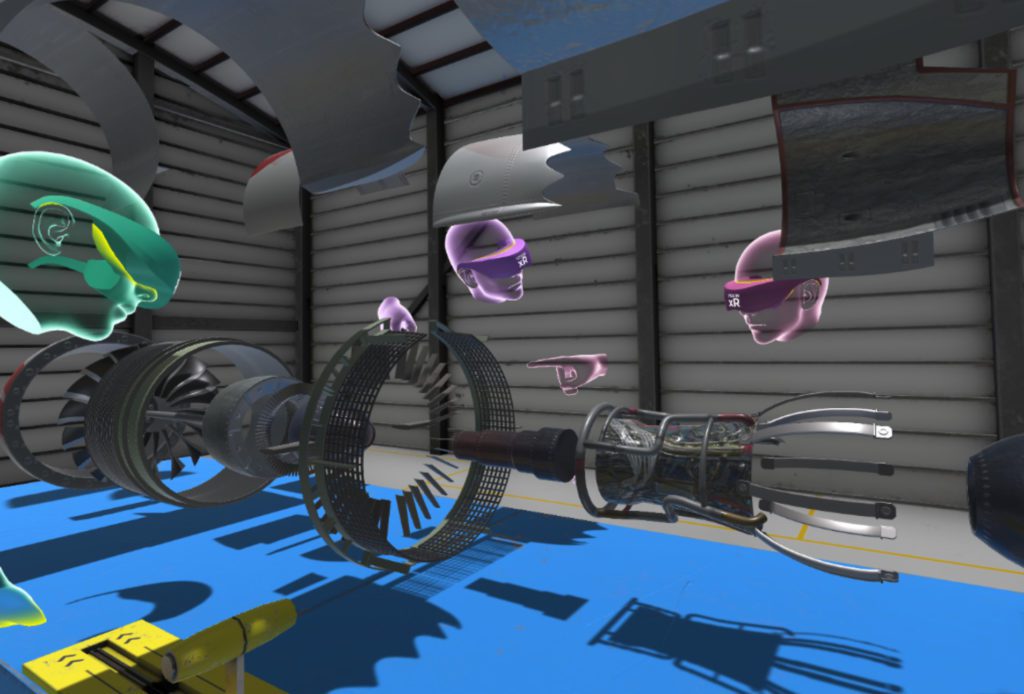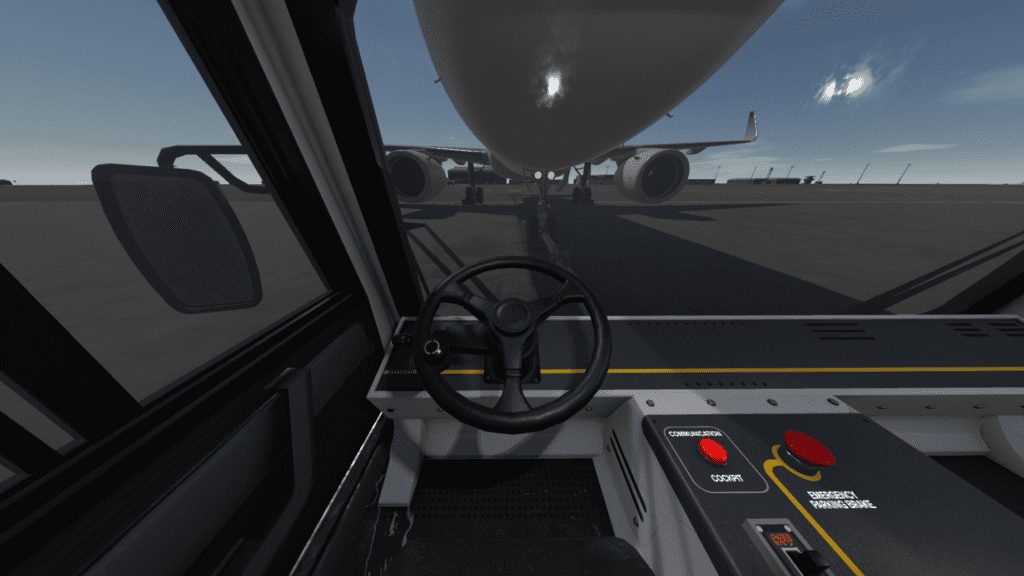As businesses look for new ways to streamline processes and create safer and more productive workplaces, as well as ways to capture attention and connect with customers, immersive technologies have the power to transform the way organisations work and communicate.
Understanding the potential impact of virtual, augmented and mixed reality and how they work is the first step to exploring how immersive technology could be successfully adopted to revolutionise your business. And to start you on this inspirational journey, here’s our top five benefits of introducing immersive technology into a business environment.
1. Connecting with customers
In the digital age, our consumer habits are changing, from how and where we access media, through to how we perceive and associate with brands. This shift in behaviour is having a profound effect on marketing and advertising activity, from attracting new audiences through to retaining existing customer bases. By embracing immersive technologies, brands can set themselves apart and connect with customers in new and exciting ways by:
- putting the focus on the customer experience. Experiential marketing is a key way for businesses to build strong relationships with customers. Immersive tech has the power to make customers physically connect with businesses, maximizing brand engagement.
- evoking an emotional response. Three’s collaboration with LadBible and VR artist, Sean Rodrigues, highlights how brands can harness the emotional power of immersive tech with a feelgood experience that helps to position their brand as one that potential customers will want to connect with.
- offering practical solutions. Sometimes your customers want to know how using your products and services will benefit them before making a purchasing decision. Immersive experiences can offer a quick and simple way to give audiences the chance to ‘try before they buy’.
- providing a gimmick to stand out from the crowd. Take the Pepsi bus stop marketing campaign. Back in 2014, this quirky short youtube clip of a high quality and unique AR experience grabbed the headlines and became a viral hit, with over 4.7m views on YouTube in less than a week.

2. Speeding up product design and development
Creating ways to design and develop products faster and in a more cost-effective way is a driving force for business innovations across a broad range of sectors. By adopting immersive technologies, organisations can significantly accelerate the product development process and get products to market in less time.
Advances in VR means that research and development (R&D) teams can fail fast and learn quickly. This is made possible by innovative platforms such as Future Visual’s VISIONxR, which provide collaborative virtual spaces to test concepts and develop prototypes, without having to invest time and money in physical prototypes. Traditional workflows are thrown out the virtual window as interdependent tasks can be carried out simultaneously, significantly speeding up the development process. Moreover, by being freed from expensive and time-intensive physical design processes, R&D teams are given more freedom to think differently, test new ideas and innovate.

3. Training employees
One of the key areas that immersive technology has been embraced by businesses is for work-related training. There are numerous tangible benefits for developing VR training programmes, including:
- Providing a safe, but realistic space for practical training activity. For many businesses, hands-on training is impossible, due to safety issues. By re-creating a virtual workplace environment, employees are able to learn and practice new skills, risk-free.
- Speeding up the learning process and increasing retention of knowledge. Learning by doing increases knowledge retention by up to 75% and reduces training time by 25%.
- Lowering costs. Not only is VR training more impactful, it’s also a cost-effective option. Direct cost savings include removing the need for employees to travel and reducing the cost of additional downtime, as well as indirect cost benefits from having a more skilled and efficient workforce.

4. Working more efficiently
Immersive tech can also be embedded into daily work routines to improve productivity and make workplaces safer, and is increasingly being adopted across manufacturing, distribution and engineering sectors. For example, augmented reality is being used by organisations such as Siemens as an operational support tool to help maintenance engineers in the field by relaying technical information through AR display screens. Other companies, such as Amazon, are also using AR in conjunction with Internet of Things (IoT) devices to help employees manage stock controls, as well as navigate their way around warehouse spaces.
5. Attracting talent
Immersive technologies can also help businesses to attract and retain the brightest and best talent. With many companies finding it hard to recruit the right employees, global recruitment drives and remote team working are an increasingly familiar business reality. Geographical location is increasingly becoming less significant, as ensuring teams have the right people with the right skills becomes a key driving force behind – wherever they might be based in the world. Technology such as VR and AR can offer practical help to facilitate this shift towards remote working, by providing team members with the tools and spaces to meet and work together effectively.
Could immersive tech work for your business?
Immersive technologies have the potential to streamline your business operations, as well as engage with employees and customers in new and innovative ways. Recognising the benefits of immersive technologies, coupled with a strong business case for adoption and a clear vision of what technology will work for you is a winning formula. And Future Visual can help you every step of the way!
Please contact our team today if you would like to demo VISIONxR.
As businesses look for new ways to streamline processes and create safer and more productive workplaces, as well as ways to capture attention and connect with customers, immersive technologies have the power to transform the way organisations work and communicate.
Understanding the potential impact of virtual, augmented and mixed reality and how they work is the first step to exploring how immersive technology could be successfully adopted to revolutionise your business. And to start you on this inspirational journey, here’s our top five benefits of introducing immersive technology into a business environment.
1. Connecting with customers
In the digital age, our consumer habits are changing, from how and where we access media, through to how we perceive and associate with brands. This shift in behaviour is having a profound effect on marketing and advertising activity, from attracting new audiences through to retaining existing customer bases. By embracing immersive technologies, brands can set themselves apart and connect with customers in new and exciting ways by:
- putting the focus on the customer experience. Experiential marketing is a key way for businesses to build strong relationships with customers. Immersive tech has the power to make customers physically connect with businesses, maximizing brand engagement.
- evoking an emotional response. Three’s collaboration with LadBible and VR artist, Sean Rodrigues, highlights how brands can harness the emotional power of immersive tech with a feelgood experience that helps to position their brand as one that potential customers will want to connect with.
- offering practical solutions. Sometimes your customers want to know how using your products and services will benefit them before making a purchasing decision. Immersive experiences can offer a quick and simple way to give audiences the chance to ‘try before they buy’.
- providing a gimmick to stand out from the crowd. Take the Pepsi bus stop marketing campaign. Back in 2014, this quirky short youtube clip of a high quality and unique AR experience grabbed the headlines and became a viral hit, with over 4.7m views on YouTube in less than a week.

2. Speeding up product design and development
Creating ways to design and develop products faster and in a more cost-effective way is a driving force for business innovations across a broad range of sectors. By adopting immersive technologies, organisations can significantly accelerate the product development process and get products to market in less time.
Advances in VR means that research and development (R&D) teams can fail fast and learn quickly. This is made possible by innovative platforms such as Future Visual’s VISIONxR, which provide collaborative virtual spaces to test concepts and develop prototypes, without having to invest time and money in physical prototypes. Traditional workflows are thrown out the virtual window as interdependent tasks can be carried out simultaneously, significantly speeding up the development process. Moreover, by being freed from expensive and time-intensive physical design processes, R&D teams are given more freedom to think differently, test new ideas and innovate.

3. Training employees
One of the key areas that immersive technology has been embraced by businesses is for work-related training. There are numerous tangible benefits for developing VR training programmes, including:
- Providing a safe, but realistic space for practical training activity. For many businesses, hands-on training is impossible, due to safety issues. By re-creating a virtual workplace environment, employees are able to learn and practice new skills, risk-free.
- Speeding up the learning process and increasing retention of knowledge. Learning by doing increases knowledge retention by up to 75% and reduces training time by 25%.
- Lowering costs. Not only is VR training more impactful, it’s also a cost-effective option. Direct cost savings include removing the need for employees to travel and reducing the cost of additional downtime, as well as indirect cost benefits from having a more skilled and efficient workforce.

4. Working more efficiently
Immersive tech can also be embedded into daily work routines to improve productivity and make workplaces safer, and is increasingly being adopted across manufacturing, distribution and engineering sectors. For example, augmented reality is being used by organisations such as Siemens as an operational support tool to help maintenance engineers in the field by relaying technical information through AR display screens. Other companies, such as Amazon, are also using AR in conjunction with Internet of Things (IoT) devices to help employees manage stock controls, as well as navigate their way around warehouse spaces.
5. Attracting talent
Immersive technologies can also help businesses to attract and retain the brightest and best talent. With many companies finding it hard to recruit the right employees, global recruitment drives and remote team working are an increasingly familiar business reality. Geographical location is increasingly becoming less significant, as ensuring teams have the right people with the right skills becomes a key driving force behind – wherever they might be based in the world. Technology such as VR and AR can offer practical help to facilitate this shift towards remote working, by providing team members with the tools and spaces to meet and work together effectively.
Could immersive tech work for your business?
Immersive technologies have the potential to streamline your business operations, as well as engage with employees and customers in new and innovative ways. Recognising the benefits of immersive technologies, coupled with a strong business case for adoption and a clear vision of what technology will work for you is a winning formula. And Future Visual can help you every step of the way!
Please contact our team today if you would like to demo VISIONxR.































